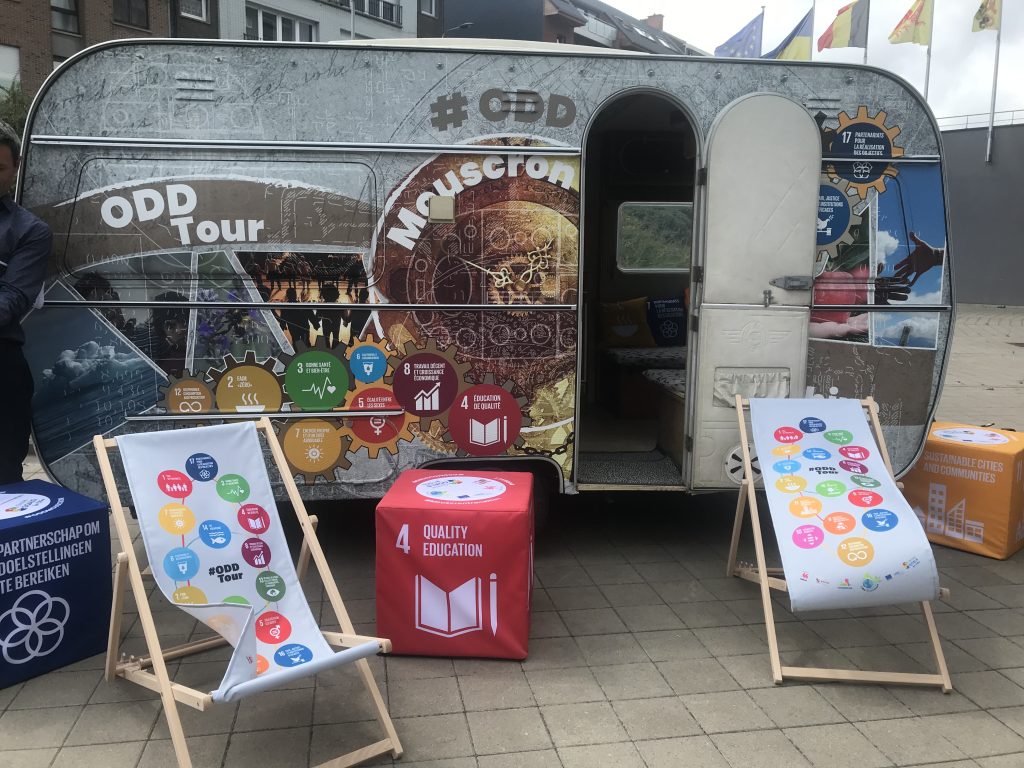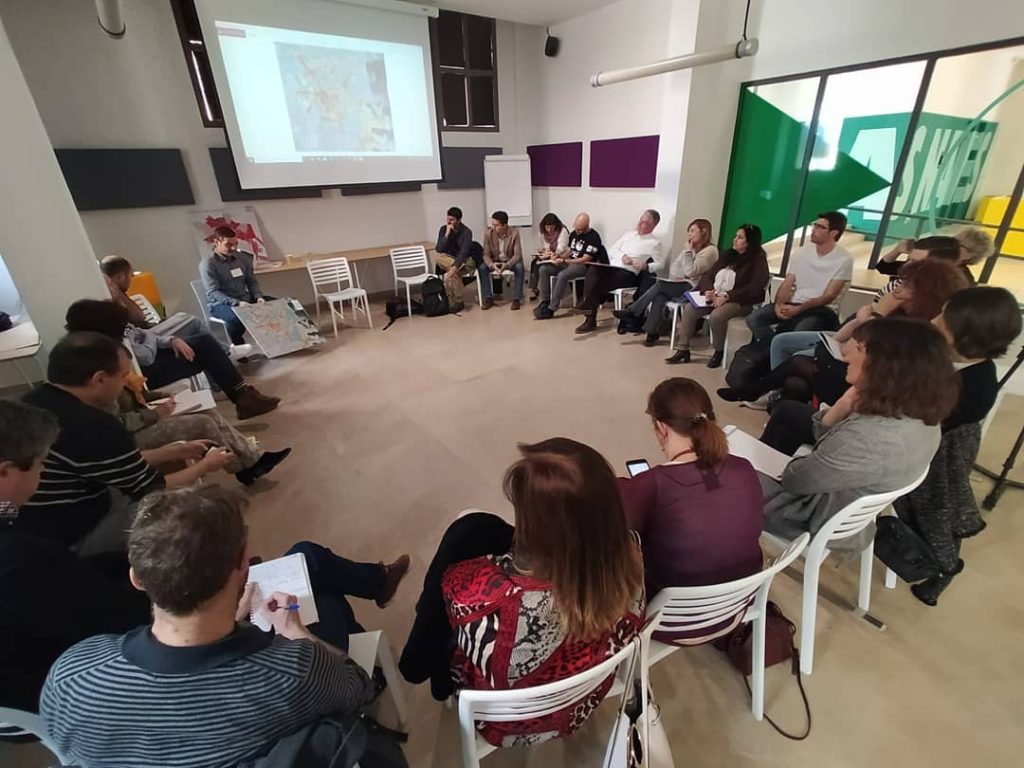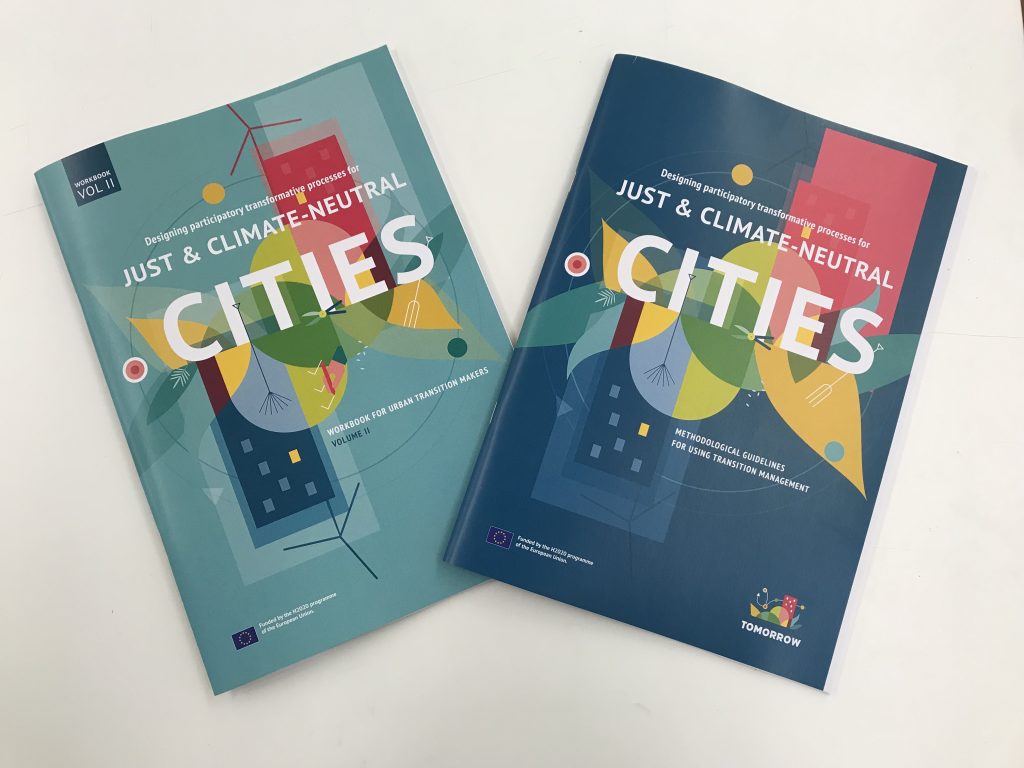Can a transition team really bring change to my city? These six cities know from experience.
Six experiences that prove that transition teams are crucial to driving ambitious transitions
To tackle your city’s transition, you will need a dedicated and diverse team set to the task: a transition team. For it to be effective, it needs to involve people with different specialities and backgrounds from across the city’s departments. Gathering such a team can seem like a daunting task. It is no secret that city departments work in silos. So you will certainly have to fight the current and shake things up in your city’s administration. But not only is the effort worth it on the long run. It’s also absolutely fundamental. The experience of the cities of Brașov, Brest, Dublin, Mouscron, Niš and Valencia are the living proof.
These six European cities set up transition teams over the past three years, as a core part of the TOMORROW project. As transition teams are specific to each city, they each have a different story to tell. But without a doubt, they all have one thing in common: how decisive these teams have been. For all 6 cities, setting up a transition team was a pivotal moment. It defined the course of their cities’ energy transitions. And allowed them to shape ambitious visions and targets for 2050, while designing concrete plans for climate neutrality in their cities, grounded in reality.
So if you’re still wondering: what would a transition team really bring to my city? What difference would it make? Then you may want to take a closer look at what happened in these cities. And how transition teams helped them shape their ambitious energy transitions.
Brașov: a transition team making energy a matter for all
In the Romanian city of Brașov, the transition team was born in the middle of the pandemic, in June 2020. Despite the drawbacks of launching something so profoundly collaborative online, the kick-off proved to be a success. And this was thanks to the members’ high motivation. In this first meeting, the team set its mission, vision and goals.
From there emerged the transition team’s main task: to reconsider all sustainability goals of Brașov. This includes political targets set for 2030. They also plan to review energy management at the local level, available technologies to reduce CO2 and legal possibilities for the municipality to produce and consume their own energy. Concretely, the Team is working on defining the city’s Sustainable Energy and Climate Action Plan (SECAP) for 2030. And not only that, they are also developing a Climate Neutrality Roadmap for 2050.
The creation of a Transition Team in their city was a decisive moment for the city. Before, energy was a matter only for the energy agency. Since the team was established, energy has become a matter of the entire city. Members of the team are now taking their own initiative. They have all started making their own plans regarding energy in line with set ambitions.
Leea Mihaila from ABMEE, Brașov’s Energy Agency, at TOMORROW’s Final Conference
Brest: a transition team multiplying local initiatives
In the Brest Metropole in Bretagne, France, the transition team was just a starting point to involve a wider range of stakeholders. Starting in spring 2020, the Brest transition team met to lay the foundations for a mobilisation strategy. The city wanted to reach out to players from a variety of sectors and with different backgrounds. For this, they called on many different internal department and partners from the economic, institutional, associative, cultural, academic and civil society worlds.
They then invited these local actors to create groups, called “coalitions”. In this way, the city fostered collective action on climate issues. These groups could be created around a shared topic of interest (e.g. encouraging people to use their car less, reducing and optimising lighting at night), a business park area (e.g. the “Technopôle” in Plouzané) or a particular business sector (e.g. events sector). The participants were diverse: public administrators, associations, private actors, city services, etc. The objective of each coalition was either to develop mutual assistance, common actions, or capacity building, according to the needs identified.
Recently, Brest organised a local COP which is building on this engagement. The transition team was key in making this initiative happen. They have thus contributed to bringing the energy transition to all parts of society in the Brest metropole.

Dublin: a transition team creating a vision
In the Irish capital, the transition team is finding innovative and participative ways to define Dublin’s fossil-free future. One of the transition team’s first tasks was to develop a vision for Dublin 2050. For this, every member of the team was pushed to think beyond the realms of possibility.
Our transition team spent an entire day working through our vision for 2050, which involved us doing a guided meditation where we walked through Dublin in 2050 and envisioned the sounds, smells, tastes and feeling of our capital city. It was a very creative and at times uncomfortable process but it allowed us to transport ourselves to a future we want to see and explore themes that we felt were extremely important for the future of Dublin.
Katie Harrington and Suzanne Fitzpatrick from Codema, Dublin’s Energy Agency
Through clustering exercises, they were able to prioritise and group these ideas to design the elements of their vision. This ranged from warm and cosy homes, thriving people, places and biodiversity, to people being actively involved and benefitting from a fair energy transition and just democratic society.
Mouscron: a transition team breaking the silos
For the small city of Mouscron, Belgium, the transition team was decisive in redefining internal collaboration in the city administration. More specifically, they successfully brought together members of five municipal services to work together: The Energy Unit, the Transversal Strategic Programme Coordination Unit, the Environment Unit, the Mobility Department and the Communication Department.
Members of the team realized that each department was working towards sustainability in projects that others were not aware off. Despite working towards the same goal, they were all working isolated from one another. This observation sparked more internal collaboration in the transition team. And profoundly reinvented the way the administration works, which usually operates in silos.
The team knew that for the city to involve citizens in the transition, they had to align their communications internally. This would allow them to build a robust and coherent narrative around the transition. And it would ensure that all departments would contribute to carrying out that message. The cross-departmental team has thus dedicated its energy to developing a centralised communications strategy. The main aim: to mobilise internal and external stakeholders on long-term commitments related to the 17 Sustainable Development Goals.

Niš: a transition team against all odds
In the Serbian city, Niš, the transition team was the most substantial outcome from the Tomorrow Project. Despite by setbacks from political changes in the city’s government, the transition team nevertheless was there to ensure continuity of transition efforts. This was a good way of involving more actors beyond the public sector. By getting a wide-range of actors on board – including the university, NGOs and energy service providers – they could overcome political differences.
Valencia: a transition team advancing the city’s climate ambitions
In the Spanish city of Valencia, the transition team has played an essential role in pushing the city’s climate ambitions. Most notably, it contributed to successfully making them one of Europe’s 100 Mission Cities striving for climate neutrality by 2030.
In 2019, the city created the Energy Transition Roundtable. This Roundtable involved 22 entities from the public and private sectors, academia, civil society and media. With around 30 working sessions, Valencia’s Transition Roundtable defined a roadmap, objectives, KPIs, responsibilities, communications campaigns and participatory processes. They also developed six different demonstration projects, engaging stakeholders beyond the transition team.
In 2021, Valencia Plenary Session agreed to apply to the European Mission of 100 climate-neutral cities in 2030. The Energy Transition Roundtable, along with the demonstration projects and the Transition Strategy that they had developed, were integrated in the Mission. This gave Valencia’s 2030 Mission a strong base to work from. With a transversal working group already up and running, Valencia had the agility to adapt to new goals. They were quick to realign their overarching action plan and climate strategy with the newly advanced target of climate neutrality by 2030.
Another advantage was that people already knew that the city was serious about climate neutrality. Since stakeholders from different fields had already worked with them on the topic. Having established credibility, Valencia’s transition team was a strong starting point to mobilise even more people around the mission. This led to the creation of an Alliance for the Climate Mission. Such an alliance served to showcase that the whole of Valencia society supports the climate mission.

You want to set up a transition team in your city?
These are just 6 examples of how transition teams have unlocked ambitious transitions at the local level. So what are you waiting for? Get one up and running in your city now!
Start by downloading TOMORROW’s Methodological Guidelines to learn all about transition management. If you need more guidance and would like insights from other cities: register to our Hub on Future-Proof Local Governance! There, you will find a community of other cities committed to this approach and experts from Energy Cities that can show you the way.
As a key element of the TOMORROW project’s methodology, a transition team is recommended as the first step for cities to set up participatory processes to design their local transition. You can find the full methodology in the guide Designing Participatory transformative process for Just & Climate-Neutral Cities, developed by the research institute DRIFT for Transition in the framework of the Horizon 2020 Project TOMORROW.


